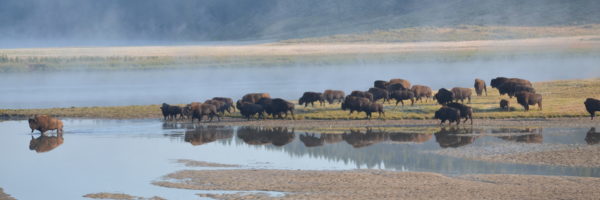Certain slow processes unfold so wonderfully that I can watch subtle changes for hours with no desire to speed them up: the emergence of an adult dragonfly from its larval exoskeleton, the way a stream carries sand as it flows across a sandy beach, the way sunset merges into the emergence of the stars. The rising of the tide is a similar example. Whenever I camp on the beach, I always end up sitting in the tidepools as the tide comes in.
On my fourth day on the Olympic seashore, I finally did something I’ve always wanted to do. As the tide was rising, I went out into the tidepools and selected a high point that I knew would become a detached island in the rising tide. I wanted the smallest, closest-to-the-water island possible without its going underwater. I knew that going out there committed me to a four to five hour sitting/standing on a little piece of rock. There would be no getting off until several hours after the tide turned.
As the tide rose, I got to experience on a grand scale the pattern that fixates me whenever I go into the tidepools. There is the classic pulse of the waves, of course, fairly steady but with its strength rising and falling. The sea goes quiet and flat for a minute. A few minutes later a series of larger than normal waves come in. That pattern forms the foundation of the experience. But the rising tide warps that basic pattern in a fascinating way.
Waves are energy rolling through the water. A wave rises and breaks when its circle of energy’s bottom starts to contact the seafloor and rub off energy. At low tide, the waves coming in start losing energy a hundred yards off shore. Waves collapse when they run into a reef just below the surface; the innumerable rocky points split waves in two directions so that the tidepools become a chatter of fractured waves bouncing around in every direction. But as the tide rises, it lifts the bottoms of the waves’ circular energy. They rub against the bottom less often. More of the energy makes it further towards shore. Waves that once died on a reef surge over it now. Waves that once split into two directions by a jutting rock now flow unsplit so the directions of the waves change. Energies rise and directions change. There was one wave that splashed drops onto the highest part of my rock and made me think “if this isn’t high tide yet, this fun could start turning scary.” My experience on the island was highly visual but my dominant memory is of the swelling sound.

I took this picture close to high tide. The camera is sitting on the highest point at the “back” of the island and I am standing about two feet back from the front of the island so what you see is most of the island. What looks like part of the island to the right of my feet is not part of my island but another rocky projection about 5 yards away that went underwater with each wave.
What I really wanted to experience was the turning of the tide. I had experienced many turnings from low tide to rising tide but what would high tide beginning to ebb look like out in the midst of the waves’ confusion? Would I recognize the turning?
The nearby rocks surrounding my island had all gone underwater some time ago – first when the waves surged over them but longer and longer until even in the troughs of the waves, they couldn’t be seen. I stood within the midst of a larger than normal series of waves. For five minutes the sound of waves surrounded me. Then the set of waves subsided into a minute of relative calm, of waves sloshing about. Near the end of that minute, I saw it. About ten feet ahead of me, a few square feet of water flowed in a direction independent of the surge and flow of waves. The flow was small and lasted only a second but the motion caught my eye because it was completely different from the wave energy that had dominated for fifteen to twenty minutes. I interpreted that motion as a sign that the sea level had dropped while the latest series of waves had piled what was now an unsustainable mass of water up against the shore and, in the lull, a little bit was draining seaward again.
Then another set of waves came in and for several minutes there were only waves pushing about and I began doubting whether that motion had significance, whether the tide had indeed turned. But now I had a spot to watch. And when the wave set quieted, I saw the draining motion again. Just as we don’t notice the shortening days until several weeks after solstice, so there was no dramatic ebbing at the turning of the tide. But then the ebbing gathered momentum and my island became part of the tidepools again and I walked back to camp, remembering that sound of waves all around me at the crescendo of the tide.
Here are a series of pictures I took to my right (when facing the ocean) through the turning of the tide.

Leave a Reply